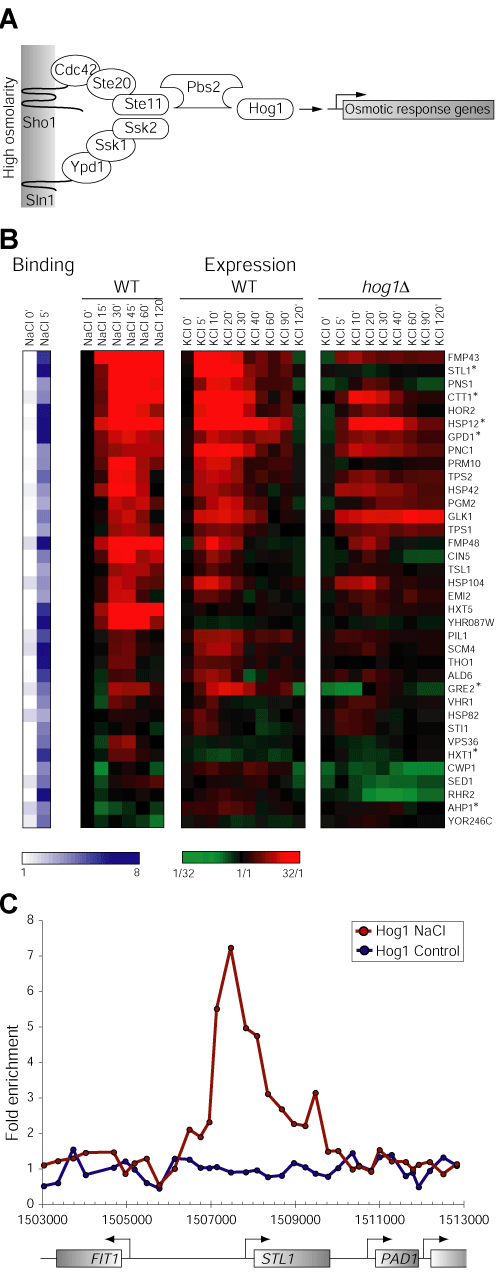 |
|
Activated Signal Transduction Kinases Frequently Occupy Target Genes
Acknowledgements |
To confirm previous reports that the MAPK Hog1p occupies genes upon exposure of cells to osmotic stress, and to identify the complete set of genes that were so occupied, we determined the genome-wide location of TAP-tagged Hog1p across the yeast genome before and 5 min after osmotic stress induced by 0.4M NaCl.
Results: Using an algorithm that identifies occupied sites with high confidence we found a total of 45 genes occupied by Hog1p (Supplemental Table S2). Of the 45 Hog1p occupied genes, 36 were found to be induced by exposure to NaCl or KCl (Causton et al. 2001; O'Rourke and Herskowitz 2004). Among these were all 7 genes that have been identified previously (Alepuz et al. 2001; Proft and Struhl 2002) (Fig. 1C). There was little or no Hog1p occupancy at genes prior to osmotic stress, which is consistent with evidence that Hog1p is translocated into the nucleus upon osmotic stress (Ferrigno et al. 1998; O'Rourke et al. 2002) and previous studies on Hog1p occupancy (Alepuz et al. 2001). Hog1p occupancy is highest at the promoters of occupied genes, but is also observed throughout the entire transcribed region of each of the target genes (Fig.1B and Supplemental Fig. S2 ). These results are consistent with recent reports that Hog1p directly interacts with components of the transcription apparatus and chromatin modifying complexes to regulate transcription at specific genes (Alepuz et al. 2001; Proft and Struhl 2002; Alepuz et al. 2003; Simone et al. 2004). |
| YOUNG
LAB
Whitehead Institute 9 Cambridge Center Cambridge, MA 02142 [T] 617.258.5218 [F] 617.258.0376 CONTACT US |
